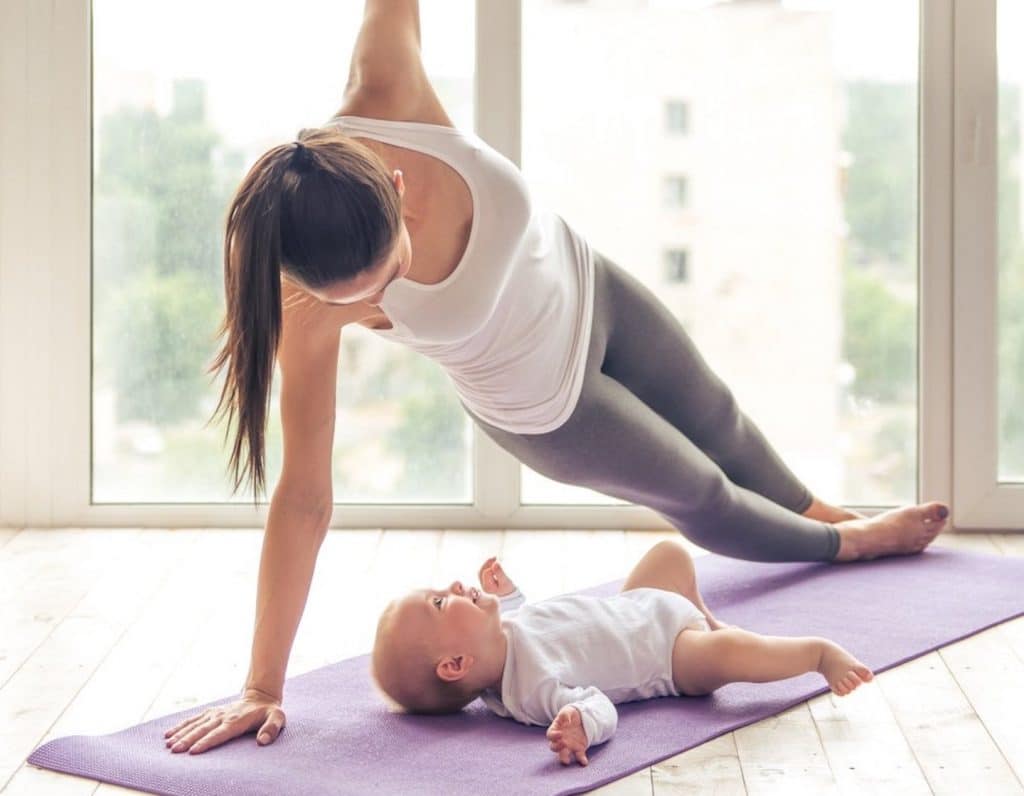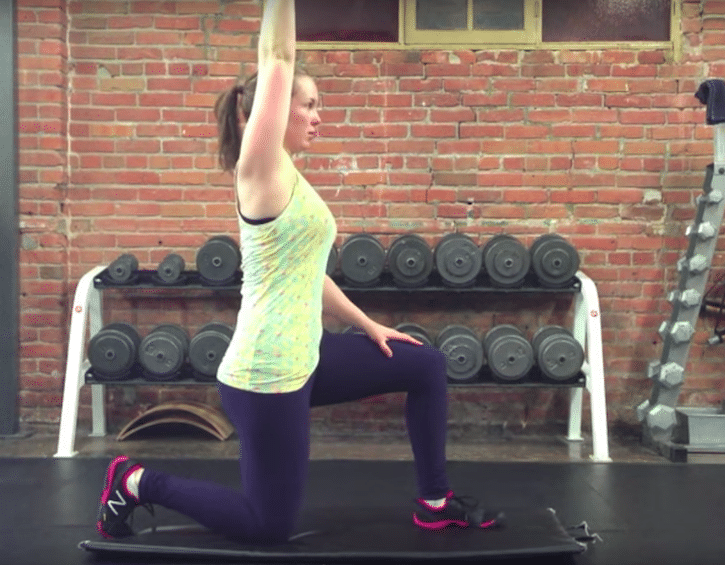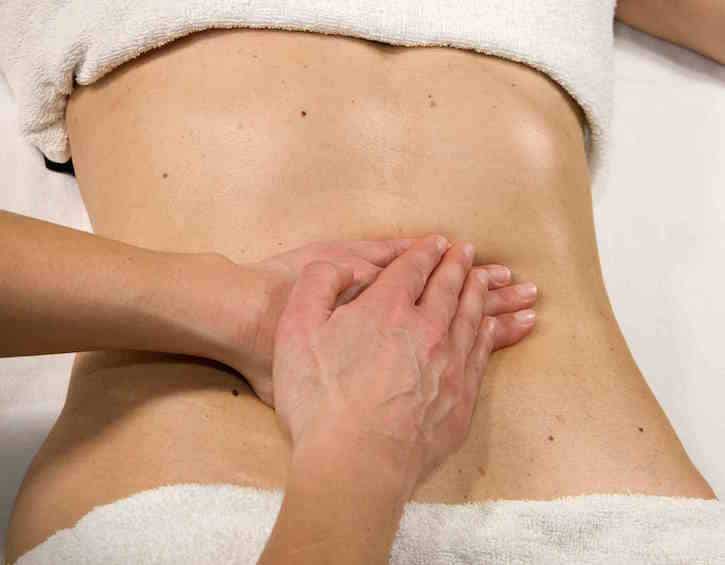





Recently given birth and keen to get moving again? Read this first, mama! Your body will thank you (and your pelvic floor)…
I realize this sounds ridiculous: there are already way too many articles floating around, advising women on what they should/shouldn’t be doing postpartum. I also acknowledge that every woman has a unique body, situation, and preferences — and you don’t need me implying that you’re doing something “wrong”.
But in my work as a pre/post natal fitness professional, I see common questions and misinformation surface, particularly when it comes to physical rehab and recovery. This is what I’d like to address today. I wish we could chat in-person, while I rocked your baby and you actually got to eat with two hands, but this article will have to do instead.
Whether it’s your first or fifth, having a newborn at home is complicated enough. We don’t need complicated rules for women in the postpartum period. Keep it simple: Rest, make movement choices that support recovery, and get a women’s health physio on your healthcare team. Your pelvic floor will thank you!
This isn’t groundbreaking news, but labor and delivery are a tremendous physical endeavor that sometimes ends with major abdominal surgery. In the wake of delivery, mothers return home to care for a newborn (and maybe a few other children), manage a household, and send work emails.
Amid these demands, it is so easy to ignore the mother’s needs. I wish I could remind you that skipping serious recovery in the early days ultimately prolongs recovery time. I’d encourage you to use whatever resources available to give yourself rest and easy access to lots of nutrients in this early period of healing.
Even during this period of relative rest, there are foundational movement patterns that can help restore the “connection to core” that is often lost during pregnancy and/or after delivery. I wish I could teach you these basics of breath and alignment to integrate into your daily life (when changing positions, feeding and rocking baby, eating).
If you have the urge to do more, gentle stretching and walking are great options in the first 6-8 weeks. I’ll be describing some of my personal favorite early postpartum movements soon; in the meantime, check out this article from Girls Gone Strong.
Remember: Movement should be pain-free and leave you feeling refreshed, not drained. Please, hold off on the mommy bootcamps and throw the “body back” programs out the window.
Oh, those infamous exercises: “like you’re stopping the flow of urine”. They’ve been recommended to women by nurses, discharge paperwork, and girlfriends the world over. Kegels aren’t bad, but they are just one part of your abdominal system – a system that functions optimally when coordinated. Doing Kegels in isolation is akin to flexing your bicep: you’re practicing a movement, but not one that integrates the whole system (arm and torso) for a practical activity (lifting something).
A more integrated approach to improved function begins with the breathing and alignment strategies mentioned above, which can be extended to your daily movement and eventually, your fitness routine. Once you’ve established the inhale relax/exhale gentle contraction, you’ll want to practice Physical Therapist Julie Wiebe’s famous cue, “Blow before you go.” In short, inhale to prepare for movement, exhale with a contraction, and move.
“Move” can be anything from sitting up in bed, lifting up a kid, pressing up out of a squat, or carrying the grocery bags, and you’ll want to try to match the strength of the contraction to the force you need for the movement (light movement = gentle contraction / heavier load = stronger contraction). You can find a much more complete explanation on Julie’s website.
I wish I could connect you to a local professional who can assess the function of this abdominal system and prescribe personalized rehab movements. These folks do exist, and they are magic. Keeping reading…
Obstetricians are aces at helping you grow and deliver a baby. Unfortunately, most are pretty terrible at advising on safe, comprehensive postpartum recovery. Usually, they will check scars, stitches, and wound healing at postpartum appointments, but don’t do comprehensive evaluations of abdominal healing and function.
I would recommend you get assessed by a women’s health physio (physical therapist). This can usually happen ~6 weeks after delivery (but ask for the office’s preference when you book the appointment). When a physio clears you, find a fitness professional with training and experience working with postpartum populations. Hint: Don’t believe that every “pre/post natal trainer” is well trained with updated info. Ask the physio for a recommendation!
Caesarean delivery involves incision, stitches, then healing through many layers of abdominal tissue. As these tissues heal, they may “stick” together and pull (visibly or not) on tissues underneath, causing tightness, pain, and impaired mobility throughout the abdominal region, even months and years later. I wish I could shout from HDB roofs that you must massage your scar (once the wound is healed externally) to aid in healing and reduce build-up of scar tissue and adhesions. How do you learn to do this? From a women’s health physio, of course! I often recommend this video for anyone interested in learning more.
Read More: Ultimate Guide to C-Sections
Lead image sourced via Quest Yoga Arts
Relaxing woman image sourced via Pinterest
Kegel exercise image by Jessie Mundell
Abdominal massage image sourced via Fire Up Fitness






 View All
View All





 View All
View All









 View All
View All





![[𝗦𝗔𝗩𝗘 𝗧𝗛𝗜𝗦] 𝗙𝗿𝗲𝗲 𝗔𝗰𝘁𝗶𝘃𝗶𝘁𝘆 𝗙𝗼𝗿 𝗞𝗶𝗱𝘀 𝗪𝗵𝗼 𝗟𝗢𝗩𝗘 𝗙𝗶𝗿𝗲𝘁𝗿𝘂𝗰𝗸𝘀! 🚒🔥
Skip the usual mall stroll and check out the Civil Defence Heritage Gallery! It’s free, air-conditioned, and housed in Singapore’s very first fire station, just across from Funan Mall.
Spanning two full floors, the gallery dives into Singapore’s firefighting history, major rescue missions, and the evolution of the SCDF. There are interactive exhibits, immersive displays, and even emergency preparedness tips for the public.
Bonus: Selected fire stations also host Saturday morning open houses with guided tours where you can watch fire gear demos, meet firefighters, and see those high-pressure water sprays in action!
𝗛𝗼𝘄 𝗺𝘂𝗰𝗵? FREE
𝗪𝗵𝗲𝗿𝗲? 62 Hill St, Singapore 179367
𝗢𝗽𝗲𝗻𝗶𝗻𝗴 𝗵𝗼𝘂𝗿𝘀? 10 am–5 pm (Closed on Mondays)
Comment “Fire” or link in bio for more details!
Tag your parent crew and plan your next adventure with the little ones! 👨👩👧👦💥
.
.
.
.
.
.
.
#SGFireStation #SCDFGallery #ThingsToDoWithKidsSG #FreeFamilyFun #SGParents #KidFriendlySG #FiretruckLovers #MuseumAdventure #SCDF #HeritageGallery #SGMums #FamilyWeekendSG #LearningThroughPlay #SingaporeWithKids](https://www.sassymamasg.com/wp-content/plugins/instagram-feed/img/placeholder.png)
